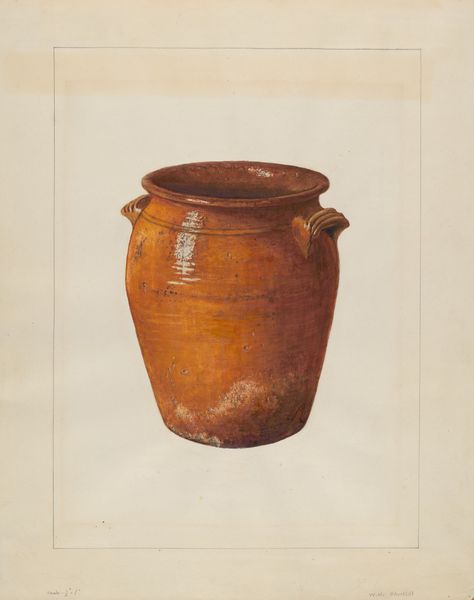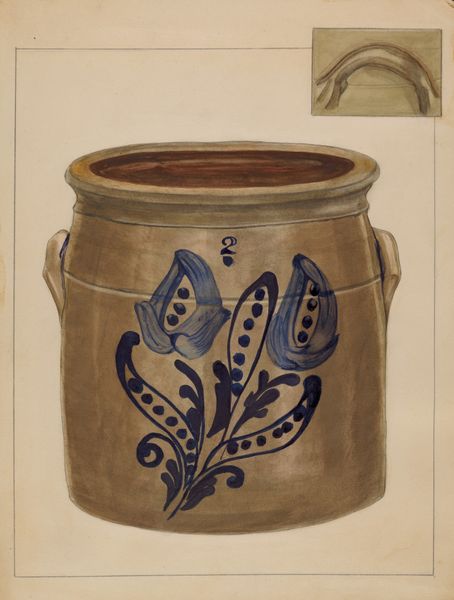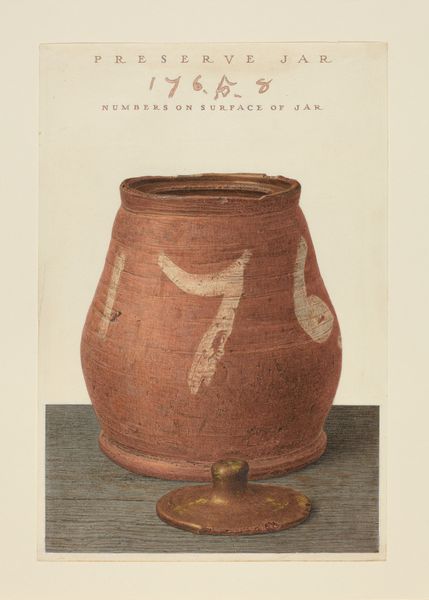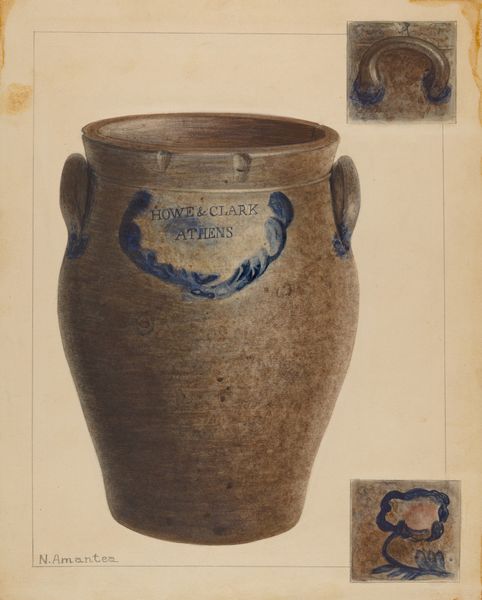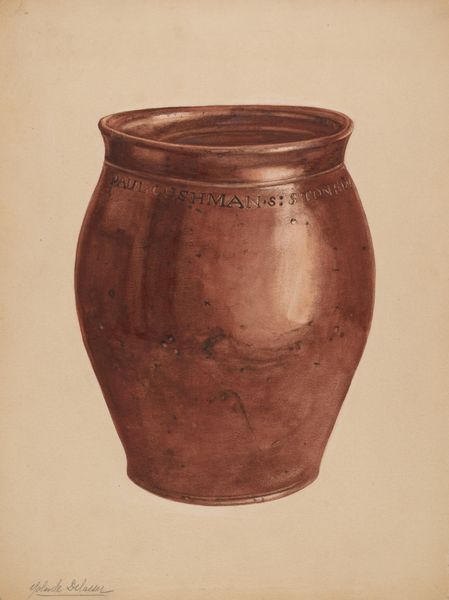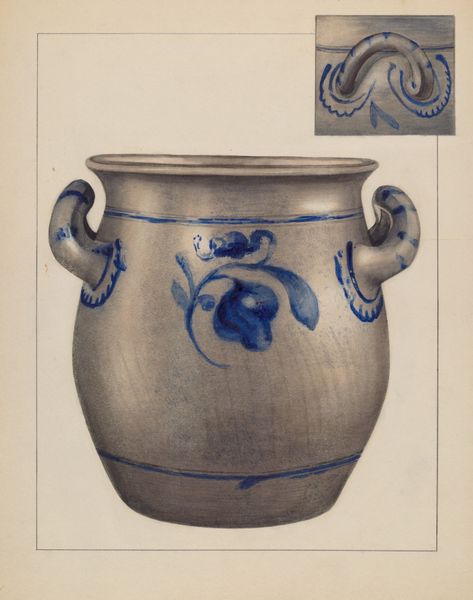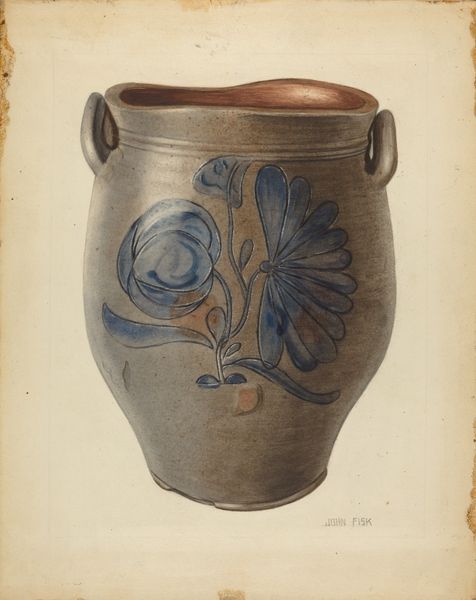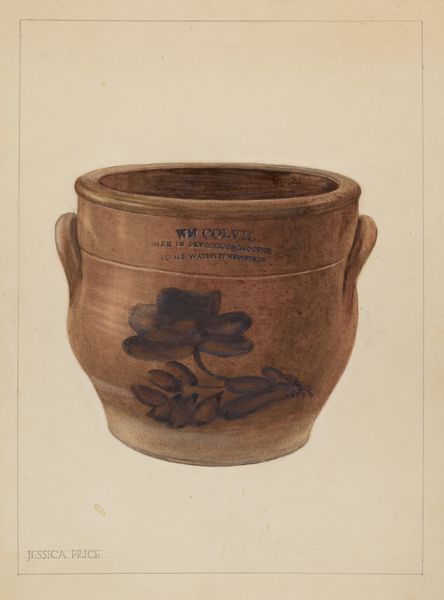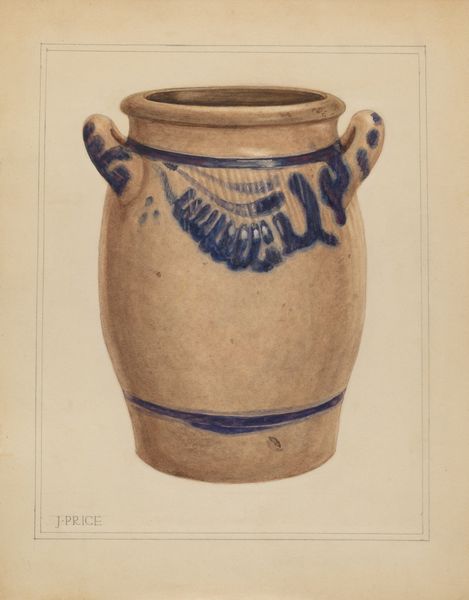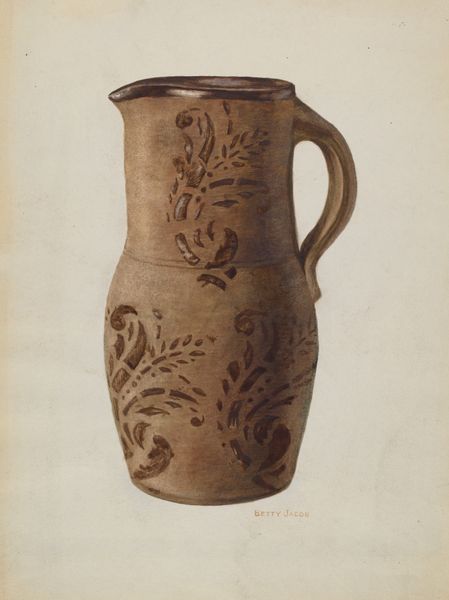
drawing, watercolor
#
drawing
#
oil painting
#
watercolor
#
realism
Dimensions: overall: 30.1 x 22.6 cm (11 7/8 x 8 7/8 in.) Original IAD Object: 11 1/4" High 10 1/4" Dia(top) 7 3/4" Base
Copyright: National Gallery of Art: CC0 1.0
Editor: This is Yolande Delasser’s “Crock,” made around 1937. It looks like watercolor and drawing on paper. The crock is centered, quite solid and utilitarian; it’s rendering feels very traditional. What jumps out at you when you see this, especially given its historical context? Curator: I’m immediately drawn to how this seemingly simple depiction of a common household object speaks volumes about labor, gender, and the domestic sphere in the 1930s. Watercolors of household objects are frequently overlooked. Does this elevate women's labor through its presence in a gallery space? I wonder, does rendering this image allow viewers to meditate on the labour-intensive processes and gendered division of work during the pre-war years? Editor: That’s a fascinating lens. I hadn’t considered the act of representation itself as making a statement. Curator: Exactly! And notice how the artist meticulously renders every detail, yet keeps a certain… detachment? It's not romanticized. It feels like an attempt to honestly document a functional object that has been passed through history. Editor: I see what you mean. It makes me consider the indigenous methods and materials used to produce these kinds of tools that perhaps we no longer consider or respect, while celebrating European handcraft and painting practices through a rendering on paper. It's quite layered when you think about it. Curator: Precisely. By depicting it through realism on paper, Delasser opens the artwork to interpretation about intersectional dynamics of class and labour, challenging us to critically re-evaluate the role of traditional crafts, the labor that produces it, and the representation of labour in our contemporary moment. This allows us to see a direct correlation between exploitation, colonial past and today. Editor: This has given me so much to think about when considering the significance of everyday objects in art. Curator: Absolutely! Keep questioning, keep connecting the dots. The most powerful interpretations come from bridging art and life.
Comments
No comments
Be the first to comment and join the conversation on the ultimate creative platform.

